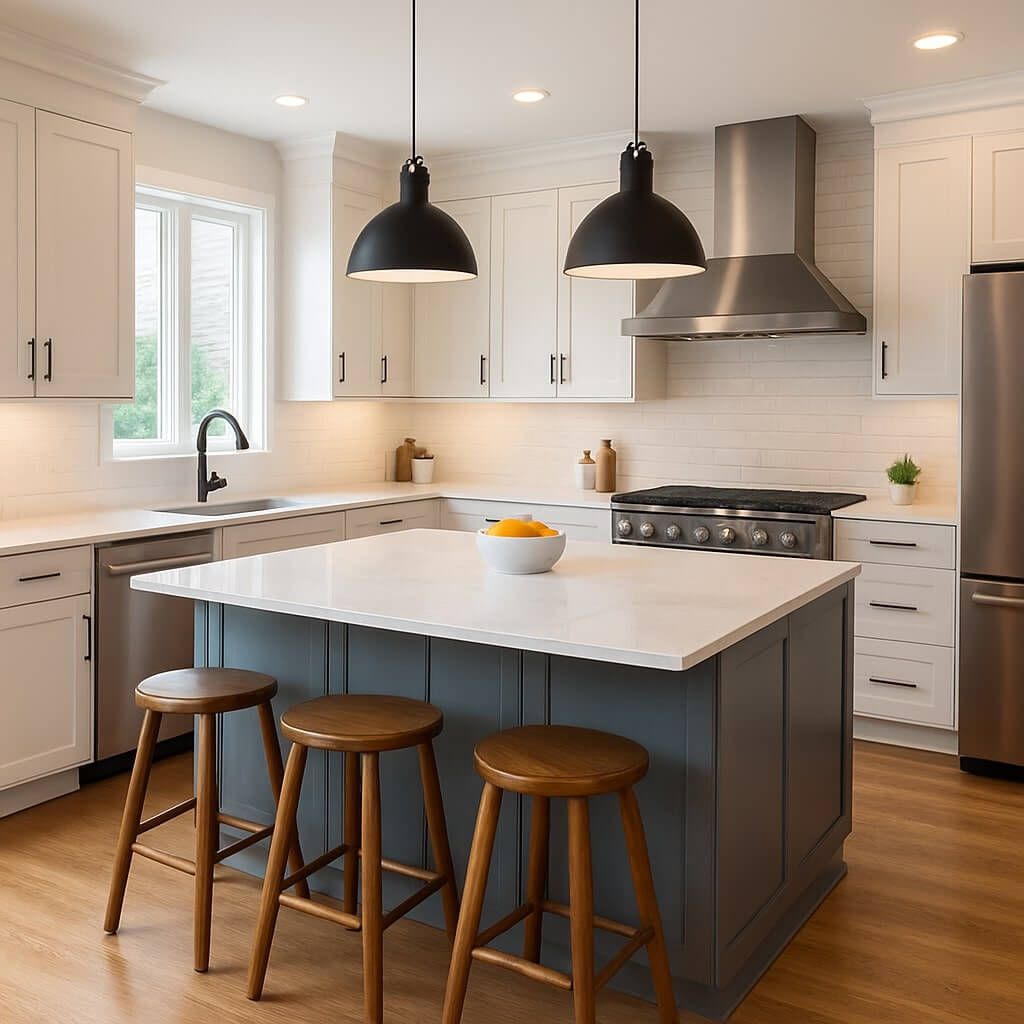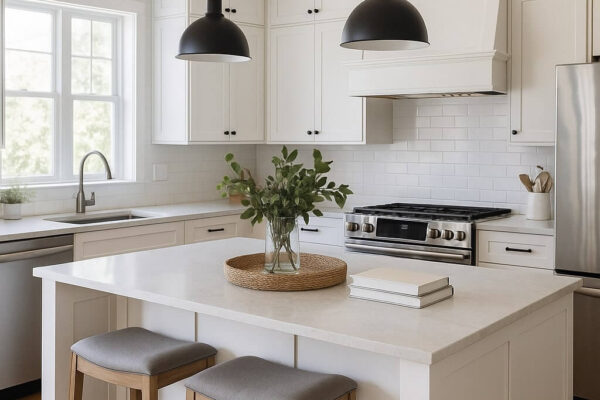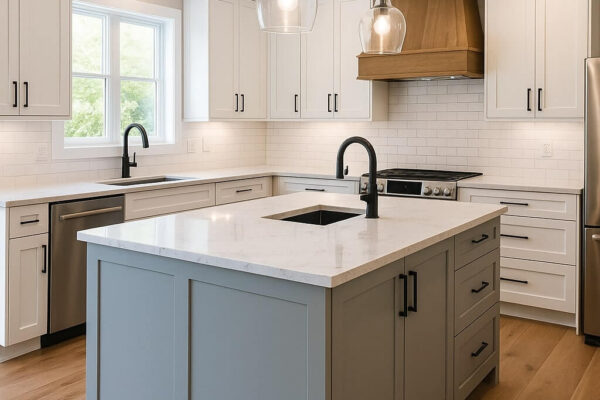In the charming village of Skokie, IL, homeowners are increasingly investing in kitchen remodeling to boost their home’s functionality, aesthetics, and market value. Whether you’re looking to modernize outdated cabinets, create an open-concept layout, or improve energy efficiency, a well-planned kitchen renovation can make a significant difference.
Benefits of Remodeling Your Kitchen in Skokie
1. Increase Property Value
A remodeled kitchen is one of the best ways to increase the resale value of your home in Skokie. Potential buyers often focus on the kitchen when making a purchase decision.
2. Improved Functionality and Efficiency
Modern layouts, better appliances, and clever storage can make your kitchen more user-friendly and energy-efficient.
3. Enhanced Aesthetics
From granite countertops to custom cabinetry and smart lighting, remodeling allows you to align your kitchen’s look with your personal taste.
Kitchen Remodeling Trends in Skokie for 2025
- Sustainable materials like bamboo flooring and recycled glass countertops.
- Smart kitchens with voice-controlled appliances.
- Two-tone cabinets in earth tones or bold contrasts.
- Large kitchen islands for entertaining and meal prep.
- LED task lighting and pendant fixtures for ambiance and function.
Key Steps in a Successful Kitchen Remodel
1. Set a Realistic Budget
Plan for both expected costs and hidden expenses like permits or upgrades to old wiring.
2. Hire a Licensed Skokie Contractor
Local professionals understand Skokie building codes and permit requirements, ensuring smooth project execution.
3. Design with Purpose
Choose a layout that enhances workflow (the “kitchen work triangle”), and incorporate features tailored to your lifestyle.
4. Choose Quality Materials
Invest in durable countertops, moisture-resistant cabinets, and flooring suited for heavy foot traffic.
How to Choose the Best Kitchen Remodeling Contractor in Skokie
- Check Licenses and Insurance
- Ask for Local References
- View Portfolio of Past Projects
- Compare Quotes and Warranties
- Look for Industry Certifications (e.g., NKBA, NARI)
Cost of Kitchen Remodeling in Skokie
Kitchen remodels in Skokie typically range from $15,000 to $60,000, depending on the scope:
| Remodel Type | Average Cost |
|---|---|
| Minor Remodel | $15,000–$25,000 |
| Mid-Range Remodel | $30,000–$45,000 |
| Luxury Remodel | $50,000–$100,000+ |
Factors influencing cost include square footage, choice of materials, and structural changes.
Permits and Regulations in Skokie
Before starting, you must comply with Skokie Village permitting laws. Most kitchen remodels involving plumbing, electrical, or structural changes will require permits. Work with a contractor familiar with local regulations.
Frequently Asked Questions (FAQs)
1. How long does a kitchen remodel take in Skokie?
Depending on complexity, remodels can take anywhere from 4 to 12 weeks. Custom cabinetry or specialty materials may add time.
2. Do I need a permit to remodel my kitchen in Skokie?
Yes, for most remodels involving electrical, plumbing, or structural work. Always verify with the Skokie Building Department.
3. What’s the ROI on a kitchen remodel in Skokie?
On average, a minor kitchen remodel in Skokie returns 70%–80% of the investment when selling the home.
4. Can I live in my home during the remodel?
Yes, though it might be inconvenient. Many contractors set up temporary kitchens to help homeowners cope during construction.
5. What kitchen design styles are popular in Skokie?
Transitional, modern farmhouse, and Scandinavian-inspired kitchens are trending locally in 2025.
Conclusion: Bring Your Dream Kitchen to Life in Skokie
A well-designed kitchen remodel can breathe new life into your home, improve your daily experience, and enhance resale value. By working with experienced professionals in Skokie and making informed design choices, you can create a kitchen that combines beauty, utility, and value.







